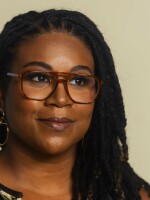JUANA SUMMERS, HOST:
The ozone layer shields life on Earth from harmful radiation from space. Think of it as the Earth's sunscreen. But you may recall that back in the 1980s, we ripped a hole in that layer over the South Pole by using certain chemicals that destroyed ozone. Well, the world jumped into action and agreed in 1987 to the Montreal Protocol to phase out those chemicals. The hole peaked in size in 2006, and since then, it's been slowly shrinking, a trend that continued this year. Paul Newman is here to tell us more. He's chief scientist for Earth Sciences at NASA's Goddard Space Flight Center in Greenbelt, Md. Paul, welcome to the show.
PAUL NEWMAN: How are you doing?
SUMMERS: I am well. Thanks for being here.
NEWMAN: Great.
SUMMERS: The ozone hole is shrinking in size but still recovering pretty slowly. When do you expect this area of the ozone layer to fully recover?
NEWMAN: Well, the chlorofluorocarbons and halons that lead to ozone destruction are very long-lived chemicals. They increased in the atmosphere through the '70s and '80s. And they began to really decline in 1995. Now, we expect they'll decline at a rate where the ozone hole is back to a normal level in the 2060s to 2070s.
SUMMERS: The world agreed to phase out these ozone-depleting chemicals in the late 1980s, and it took decades to get to the moderate progress that we are seeing today. Is there a lesson here for acting on global climate change?
NEWMAN: I think there's a great lesson from the Montreal Protocol, and the lesson is that every nation on Earth has signed it. All nations agreed that protecting the Earth's ozone layer was an existential threat to life on the Earth's surface. I think as climate continues to change, nations are eventually are going to act to protect climate just as they've acted to protect the ozone layer.
SUMMERS: What do you think it is that's different about climate change that makes it harder for the world to come together and agree on steps to fight it?
NEWMAN: First of all, with climate, there are a lot more people using fossil fuels for various things than were using chlorofluorocarbons back in the 1980s. And so it's a scale problem. Everybody drives cars. Everybody has, you know, gas stoves and so forth. So it's a much, much bigger problem. Replacing air conditioners and refrigerators was a little easier back in the 1980s. At the time the protocol was signed, there were some technologies to replace the chemicals that we used. I don't think people really know which chemicals have been replaced in their lives, but they've been replaced. We still have refrigerators. We still have air conditioners. We still have, you know, foam-blown insulation. All these technologies have now been replaced. And I think it's a real technological achievement that began to - started at the time the Montreal Protocol was signed. But it's evolved since then. So all of these technologies are now replaced, and they're ozone safe.
SUMMERS: Paul Newman is chief scientist for Earth Sciences at NASA's Goddard Space Flight Center. Thank you for sharing a little bit of good news with us today.
NEWMAN: Oh, it's great to share that news, Juana. Transcript provided by NPR, Copyright NPR.




